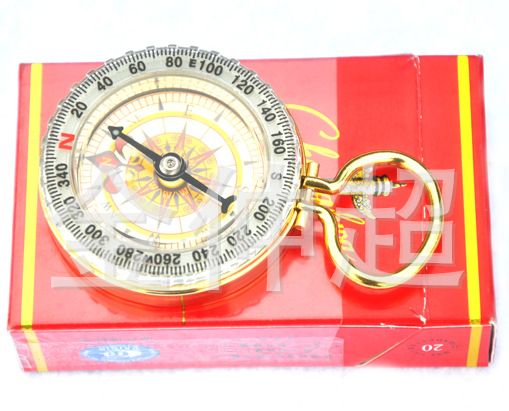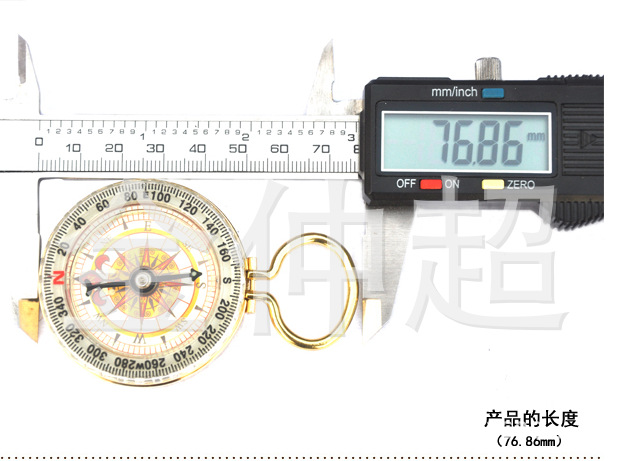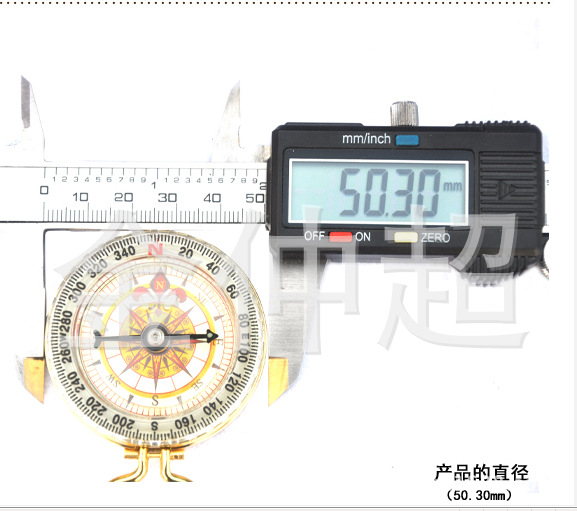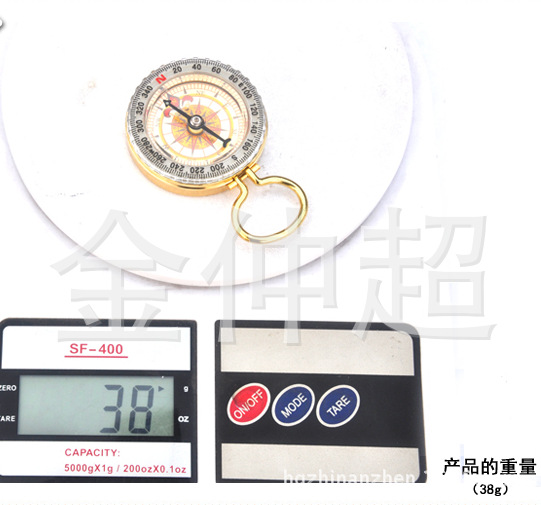
Search history
Clear allSearch by image
XDrag and drop an image here or upload an image
Max 5MB per image
UploadSign In | Join

Search history
Clear allSearch by image
XDrag and drop an image here or upload an image
Max 5MB per image
UploadSign In | Join
X Email Mobile
Price Negotiable
A new item has been added to your Shopping Cart. You now have items in your Shopping Cart.
Hangguang Compass Firm 13yr.
Contacts:Yang Meili Chat
Mobile:86-057985166462
E-mail:www.412506783@qq.com
l Product Model:G50B
l Product Type: High-end Gift Compass Guide
l Product feature: Compass
l Product Usage:Outdoor travel, wilderness survival activities, activity souvenirs
l Product Packaging:白盒
【Function】Compass
【Material】Brass
【Color】Plated 14K Gold
【指南针尺寸】50X13MM
Net weight: 39
【Packing】White Box
【每件】200 PCS
【Box Specification】43X27X30CM
Net weight: 9.8KG
Functional Introduction
1、Compass
High accuracy, clear and easy to understand
Product photos: Due to display, lighting, and camera differences, there may be some color variations. Please refer to the actual product for accuracy.
The Earth is a large magnet, with its magnetic south pole near the geographic north pole and its magnetic north pole near the geographic south pole.
The compass is subject to the forces of the Earth's magnetic field, which is why it points to one end of the compass to the north and the other to the south.
One of China's "Four Great Inventions," the compass, played an irreplaceable role in the Age of Maritime Exploration after it was transmitted to Europe. However, historians of science know that it was not the Chinese who first answered the question of "why the compass points north," but rather the British scientist William Gilbert. So, what kind of theoretical discussions did the Chinese make after inventing the compass? Did Gilbert's theory reach China in time? What impact did the "Western Learning Eastward Movement" during the late Ming and early Qing dynasties have on the development of compass theory in China? Since 2003, Professor Guan Zengjian from the Department of the History of Science and Science Philosophy at Shanghai Jiao Tong University has been researching these essentially blank issues.
The earliest theory of the compass in China was based on the theory of yin-yang and the five elements, known as the "induction theory." Gu Zengjian explains that during the mid-11th century, China's great scientist Shen Kuo was baffled by the compass. His "Mengxi Bitan" introduced the artificial magnetization method of the compass, the discovery of magnetic declination, and the method of setting up the compass, but he had no concept of why the compass points south—"The compass of the magnet... I cannot understand the reason!" Subsequently, scholars from the literary world started from the theory of yin-yang and the five elements, combined with their understanding of the shape of the earth at that time, and proposed various theories about the compass. For example, the "Guan's Geographical Indication of the Diverse" that was first proposed in the Song Dynasty, presented the following logic:
The compass is made of iron, which belongs to the element of metal. According to the theory of the five elements and their mutual generation and restriction, metal gives birth to water, and the north is associated with water. Therefore, the water in the north is the child of metal. Iron is produced from magnetite, which is conceived by the yang energy. The yang energy is associated with fire and is located in the south. Therefore, the south is equivalent to the mother of the compass. In this way, the compass, which must care for its mother and linger over its children, naturally points to the north and south directions.
Guan Zengjian said that, from the perspective of modern physics, the "Montaigne theory" is completely fanciful, but explaining the behavior of things based on their attributes has been a common practice in the history of science in both the East and the West. The ancient Chinese theory of yin and yang flourished, and it is very natural to use the theory of yin and yang to explain the principle of the compass pointing south and the "constant slight deviation to the east". Especially, the theory believes that different ends of the magnet have different attributes, which determine the direction of the magnet needle. This view is very easy to inspire people to discover the two poles of the magnet and further to associate the relationship between the magnetic poles and the direction of the magnet needle, thus finding possible ways to correctly understand this problem.
The principle of the compass in the Southern Song Dynasty was still believed to be "where the compass points, where the yang energy is located," but the argument was more based on the coordinate system of geographical directions – the Chinese ancient people believed that the earth was flat and limited in size, so there must be a center on the earth's surface, and the meridian passing through that center is the north-south direction. The Southern Song Dynasty people, such as San Yi, believed that once the measurement location is not on this north-south line, the compass will naturally "deviate slightly." By the Ming Dynasty, someone falsely attributed to the Southern Song Dynasty people's works pointed out that the compass direction is determined by the large place position system, and the deviation angle is determined by the celestial orientation division system. Guan Zengjian believes that this view "reflects the dilemma of the traditional compass theory in the face of the contradiction between the yin-yang induction theory and the existence of magnetic declination."
During the Ming Dynasty's Wanli reign (1573-1620 AD), missionaries came to China, bringing Western theories on the compass, the concept of the Earth, and related scientific knowledge. Influenced by them, Chinese scholars began to explore compass theories from a new perspective. During this process, the role of Yin-Yang and the Five Elements gradually diminished, and the analysis from a mechanical perspective increased. However, Gilbert's scientific theories from 1600 were not even unified in Western academia, let alone accepted in the East. Among the missionaries, the most systematic compass theory came from the Belgian Jesuit Michiel de Ruyter, who arrived in China in 1658. However, he believed that the direction of the compass was determined by the geographic North and South poles of the Earth itself, and his theory remained within the scope of ancient science, unlike Gilbert, who recognized that the Earth itself has a magnetic body. Ruyter's theory had a profound impact in China, and it was still used by scholars to explain compass problems until the mid-19th century. At this time, missionaries who had arrived in China during the late Qing Dynasty had begun to introduce modern Western magnetism knowledge to China.





Update time:
TOP